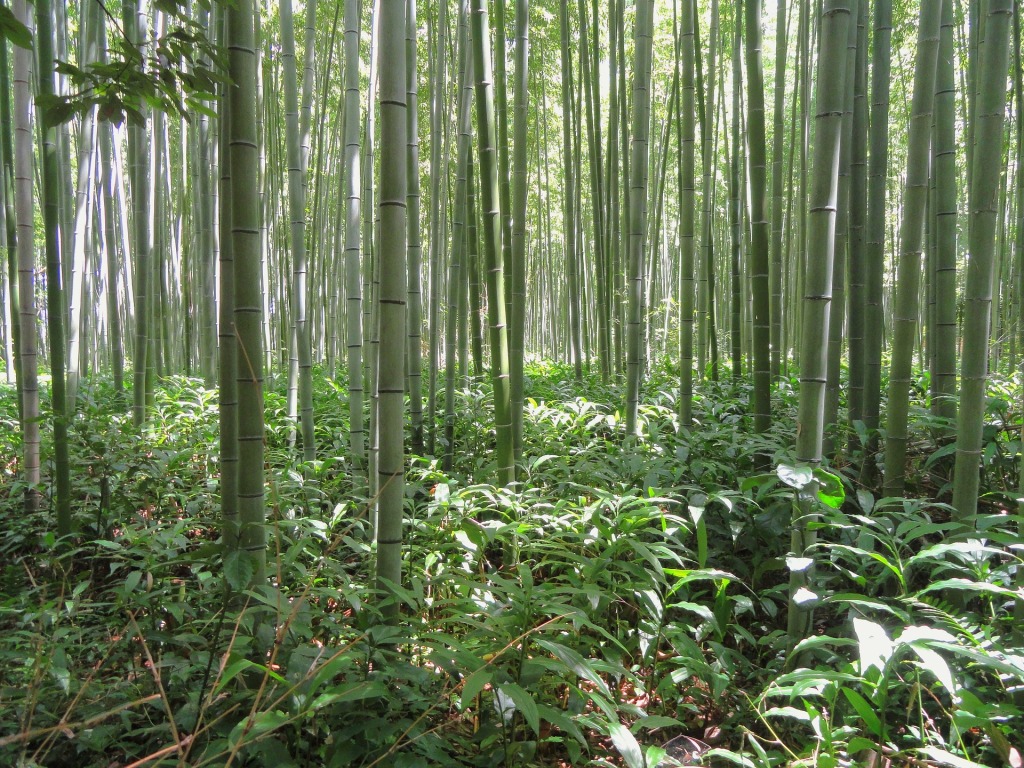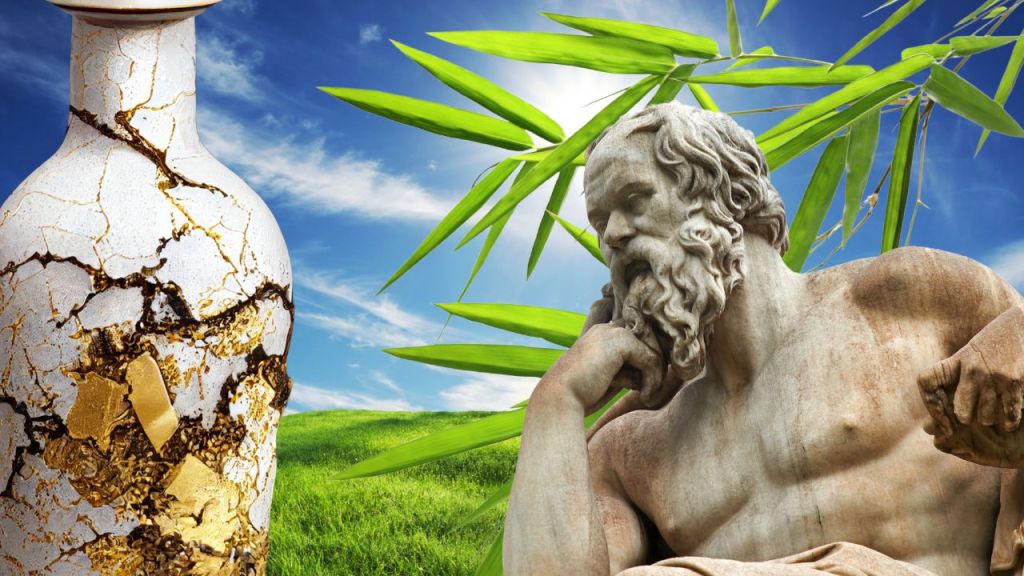As the world becomes more eco-conscious, biodegradable bamboo is leading the charge as a trendy and sustainable alternative to traditional materials. From textiles to homeware and hardware, this renewable resource is gaining popularity for its versatility and perceived environmental benefits.
But is bamboo as a biomaterial really as sustainable as it seems? Some processes surrounding the manufacturing and production of bamboo-sourced products may actually counteract their overall ecological benefits.
Today, we’ll examine the truth about biodegradable bamboo–from its properties and manufacturing process to its impact on waste and local ecosystems.
Are you ready to join the journey of sustainability and responsible consumerism?
Let’s explore!
Understanding Biodegradable Bamboo
Bamboo has unique properties and characteristics, making it an ideal candidate for developing strong biodegradable products.
The Properties and Characteristics of Bamboo
Bamboo is a fast-growing plant that belongs to the grass family and can grow up to three feet in one day–reaching maturity within five years. This accelerated growth rate makes it an incredibly renewable resource for manufacturing sustainable products. Bamboo also has impressive strength and durability, making it ideal for textiles, homeware, hardware, and many other applications.
One of the most significant benefits of using bamboo is its antibacterial properties. Bamboo fibers contain a bio-agent known as “bamboo kun.” This fiber can resist bacteria growth even after washing several times.
Bamboo textiles are also naturally hypoallergenic and perfect for people with sensitive skin. Furthermore, bamboo’s high moisture-wicking ability ensures fabrics stay breathable even in hot weather conditions.
These traits make bamboo viscose a popular choice for eco-conscious consumers looking to switch from traditional cotton or synthetic fabrics while still enjoying softness and comfort.
The Biodegradable Properties of Bamboo
Bamboo is a highly sustainable and eco-friendly material partly because of its biodegradable properties. When bamboo products reach the end of their life, they can break down naturally and safely without emitting harmful pollutants or releasing greenhouse gases.
Moreover, bamboo’s natural resistance to decay makes it ideal for composting—where microorganisms break it down into natural soil enrichers. This process helps support organic farming practices and reduces the dependency on chemical fertilizers.
So as consumers continue to prioritize sustainability and environmental responsibility, manufacturers are increasingly turning to bamboo as a viable alternative to traditional textiles and building materials which negatively impact ecosystems worldwide.
The Environmental Benefits of Using Bamboo
Bamboo is an incredibly sustainable crop with impressive environmental benefits. As a fast-growing plant, it requires fewer resources and fertilizers than other crops like cotton or wood. Bamboo is also uniquely able to absorb large amounts of carbon dioxide from the air, making it an effective tool in fighting climate change.
Not only is bamboo eco-friendly during its growth process, but it’s also highly renewable. Unlike trees that can take decades to regrow after companies harvest them for lumber or paper products, bamboo can regrow within a mere 3-5 years!

The Truth About Bamboo: Is It Really Sustainable?
Let’s take a closer look at the manufacturing process and biodegradability of bamboo to determine whether it truly is a sustainable material.
Examining the Manufacturing Process and Its Impact on the Environment
The manufacturing process of bamboo products is a critical factor to consider when evaluating its environmental impact. While it’s true that bamboo grows quickly and does not require chemical fertilizers, producing bamboo textiles involves heavy chemical treatments to extract fibers from the plant material. Chemicals like sodium hydroxide and sulfuric acid are used in the process, resulting in toxic waste that can harm water sources and wildlife.
Moreover, most bamboo products come from China, where there are often lower labor standards and environmental regulations than in other areas of the world. This means that if you purchase a product made from non-certified or unsustainably sourced bamboo, you may be contributing to exploitative labor practices or polluting industries. Awareness of your sourcing choices can help ensure that your purchases align with your eco-conscious values while supporting ethical and sustainable business practices worldwide.
Analyzing the Carbon Footprint of Bamboo Products
Many tout bamboo as a sustainable alternative to traditional materials because of its fast-growing nature. However, you also need to consider the manufacturing process of bamboo products when evaluating its overall environmental impact. The production of bamboo viscose requires chemicals and large amounts of water, leading to significant carbon emissions.
On the other hand, bamboo lyocell production uses a closed-loop process that recycles water and solvents, resulting in a much lower carbon footprint. Additionally, choosing locally sourced and manufactured bamboo products can reduce their environmental impact by minimizing transportation emissions.
Comparing the Differences Between Bamboo Viscose and Bamboo Lyocell
Bamboo viscose and bamboo lyocell are two popular textile materials made from bamboo.
While both materials have biodegradable properties, Bamboo Lyocell has less environmental impact during manufacturing than Viscose due to its closed-loop system. Bamboo Lyocell’s durable characteristics also make it long-lasting and require less frequent replacements, reducing waste in the long term.
Biodegradable Bamboo Products: Eco-Friendly or a Trendy Greenwashing Ploy?
So what’s the difference in the perception vs. reality of bamboo as an eco-friendly material? Are biodegradable bamboo products truly sustainable or simply a trendy greenwashing ploy?
Clarifying the Perception vs. Reality of Bamboo as an Eco-Friendly Material
The reality is that using bamboo as a sustainable resource is not so black and white. While bamboo has many environmental benefits, its manufacturing process can actually harm the environment if done irresponsibly.
Therefore, it’s essential to know what materials you’re buying and how they were manufactured when choosing eco-friendly options. Look for certifications such as OEKO-TEX Standard 100 or Global Organic Textile Standard (GOTS) to ensure your products meet specific sustainability standards.
Investigating the Potential Negative Impact of Bamboo Plantations on Local Ecosystems
There are valid concerns about the negative impact of bamboo plantations on local ecosystems. Bamboo plantations can disrupt natural habitats and alter water tables, leading to soil degradation and loss of biodiversity. Additionally, monoculture bamboo plantation farming may require fertilizers and pesticides, which can contaminate nearby ecosystems.
However, it’s important to note that responsible sourcing practices and sustainable agriculture methods can minimize these potential negative impacts. By supporting certified sustainable bamboo production processes or seeking out eco-friendly alternatives where possible, you can help promote environmentally responsible manufacturing practices within the industry while still enjoying the benefits of this versatile material.

Sustainable Bamboo Practices and Responsible Consumerism
To support the sustainable use of bamboo, consumers need to understand certifications and standards for responsible sourcing and manufacturing processes. It’s also wise to explore eco-friendly alternatives to biodegradable bamboo products.
Understanding Certifications and Standards for Sustainable Bamboo
Regarding sustainable bamboo sourcing and manufacturing, there are several certifications and standards to look out for. One of the most recognizable certification bodies is the Forest Stewardship Council (FSC), which ensures that bamboo products come from responsibly managed forests. The Rainforest Alliance also offers a certification program that considers environmental and social factors throughout production.
Supporting Responsible Sourcing and Manufacturing Processes
As a consumer, you have the power to positively impact the planet by supporting eco-conscious businesses that prioritize responsible sourcing and manufacturing practices. Sustainable bamboo textile brands that invest in ethical supply chains and ensure their workers are treated fairly should be at the top of your shopping list.
Furthermore, it’s essential to do your research when selecting sustainable products made from biodegradable bamboo. Reputable certifications like the Global Organic Textile Standard (GOTS) or OEKO-TEX can indicate whether a product is genuinely eco-friendly. Independent lab testing can also help identify any harmful chemicals used during production.
Exploring Eco-friendly Alternatives to Biodegradable Bamboo
You have the power to make responsible choices and support sustainable materials. As such, it’s important to consider equally eco-friendly alternatives. One such alternative is linen—a natural fiber made from flax plants that require minimal fertilizers or pesticides during cultivation.
Another option is hemp, which also boasts impressive sustainability credentials. Hemp fabrics are known for their durability and require significantly less water than cotton during production. Plus, hemp crops grow quickly without the need for harmful chemicals or synthetic fertilizers.
Ultimately, as the global community aims toward more sustainable living and consumption habits, exploring and supporting eco-conscious alternatives like linen and hemp can help reduce negative environmental impacts.

Frequently Asked Questions
Here are some answers to the most frequently asked questions about biodegradable bamboo.
Is bamboo really biodegradable and eco-friendly?
While many tout bamboo as a sustainable material due to its fast growth and ability to regenerate quickly, the processing required to turn bamboo into usable products can have a significant environmental impact. Additionally, not all bamboo products are biodegradable—it depends on how companies produce them and what other materials are added during manufacturing.
How does using bamboo products help the environment?
Choosing eco-friendly materials like bamboo can help reduce dependence on non-renewable resources like plastic or petroleum-based fabrics. Bamboo also produces more oxygen than most other plants, making it a great option for reforestation efforts and carbon sequestration.
Are there any downsides to using biodegradable bamboo products?
While there are many potential benefits of using biodegradable bamboo products, some argue that these items may still contribute to waste if they aren’t properly disposed of in composting facilities or industrial recycling systems designed specifically for plant-derived materials.
What should I look for when choosing biodegradable bamboo products?
To ensure that your chosen product is truly environmentally friendly, look for certifications such as the Forest Stewardship Council (FSC) label or the Rainforest Alliance Certified seal. You should also research the company producing the item to learn more about its sustainability practices and commitments to reducing waste throughout its supply chain.
So, Is Biodegradable Bamboo Truly Sustainable?
Biodegradable bamboo is a promising eco-friendly material that has the potential to contribute to a more sustainable future. Its fast-growing properties and renewable resources make it an attractive alternative to traditional materials like wood or cotton.
However, you must be cautious not to fall prey to greenwashing tactics that may disguise less ethical manufacturing practices. As an eco-conscious consumer, you have to take the initiative to support sustainable agriculture and responsible sourcing of bamboo products.
As researchers continue exploring innovative solutions that prioritize environmental responsibility without sacrificing style or functionality, let’s all remember that trendy can also be eco-friendly!






Leave a comment